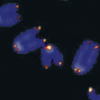- Formiculture.com
- Forums
- Gallery
- Members
- Member Map
- Chat

Imagine an ant (now with PINKOMYRMEX)
Started By
RushmoreAnts
, Sep 30 2019 9:41 AM
199 replies to this topic
#21
 Offline
-
Posted October 1 2019 - 7:12 PM
Offline
-
Posted October 1 2019 - 7:12 PM
I've had a colony. They seem to like blue whales and brackish water.
- Mettcollsuss likes this
My Main Journal | My Neivamyrmex Journal | My Ant Adoption | My YouTube
Join the TennesseeAnts Discord Server! https://discord.gg/JbKwPgs
#22
 Offline
-
Posted October 2 2019 - 8:34 AM
Offline
-
Posted October 2 2019 - 8:34 AM
Daceton megacephala
Daceton megacephala is a worker-less, social parasite of Daceton armigerum. Females are small (5.4-6.8 mm) and have a grossly enlarged head with strongly hooked mandibles. This species lacks a snap-jaw mechanism. No apical teeth are present. The eye is large, similar in size proportionally to the eye of the other two species. the mesosoma is thin and slender, lacking all spines found in other Daceton but the propodeal spines. Propodeal spines are strongly elongated, curving upward at the tip, trailing off into a sharp point. The petioles are short and stout, having large spines off the trailing edges, larger on the petiole. The gaster is wide and smooth, having a small number of long, semi-erect hairs. The coloration is a light peach throughout. Males are similar to that of other Daceton species but can be easily distinguished by their smaller size and darker wings. Females are known for hitching rides on the underside of Daceton armigerum workers. They first seek out a host while in flight. When a host worker is discovered, females hover in place above their host. Females then stoop downwards and neutralize the ant with it's large, curved mandibles, which are adapted to fit perfectly around the 'neck' of all Daceton armigerum worker castes. While the worker struggles to remove the attacker from herself, the Daceton megacephala female maneuvers herself to be situated underneath the worker ant's mesosoma. She then loosens her grip and clings on. After the host ant calms, she returns to the nest where the Daceton megacephala female drops off of her host while simultaneously dropping her wings. Her clinging to her host has covered her in her host's pheromone scent. The Daceton megacephala female sits motionless while workers sense her, covering her in even more pheromones. Once accepted into the colony, she makes her way to the queen. She climbs atop of the queen, covering herself it the queen's pheromones. She acts cooperatively with the queen, though only producing eggs during alate producing season, when new males and queens are produced by both queens.
- Mettcollsuss, TennesseeAnts and camponotuskeeper like this
Currently Keeping:
Camponotus chromaiodes, Camponotus nearcticus, Stigmatomma pallipes, Strumigenys brevisetosa, Strumigenys clypeata, Strumigenys louisianae, Strumigenys membranifera, Strumigenys reflexa, Strumigenys rostrata
#23
 Offline
-
Posted October 2 2019 - 8:57 AM
Offline
-
Posted October 2 2019 - 8:57 AM
We need drawings for all these things
- TennesseeAnts likes this
Visit us at www.canada-ant-colony.com !
#24
 Offline
-
Posted October 2 2019 - 8:58 AM
Offline
-
Posted October 2 2019 - 8:58 AM
YASSS
My Main Journal | My Neivamyrmex Journal | My Ant Adoption | My YouTube
Join the TennesseeAnts Discord Server! https://discord.gg/JbKwPgs
#25
 Offline
-
Posted October 2 2019 - 9:13 AM
Offline
-
Posted October 2 2019 - 9:13 AM
*clears throat*
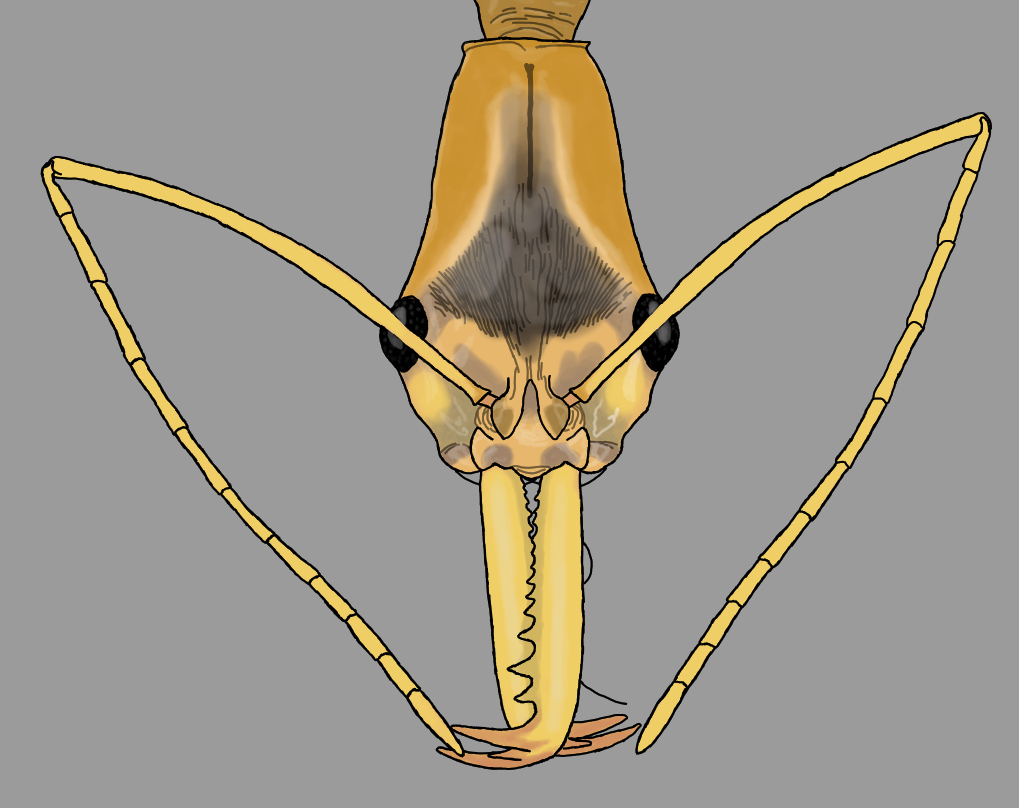
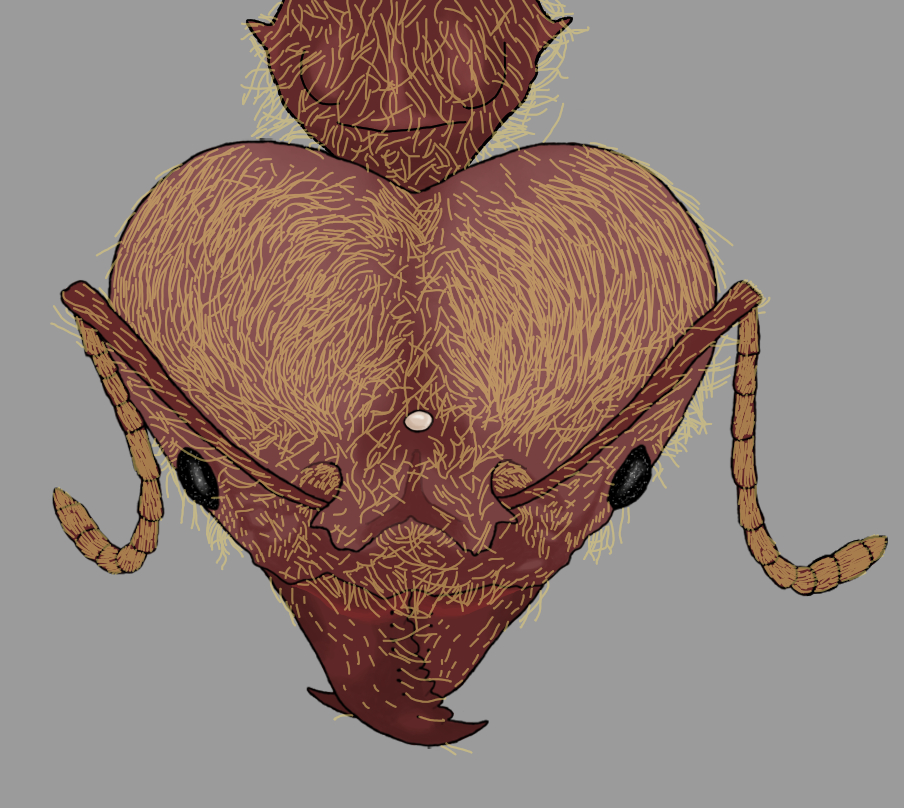
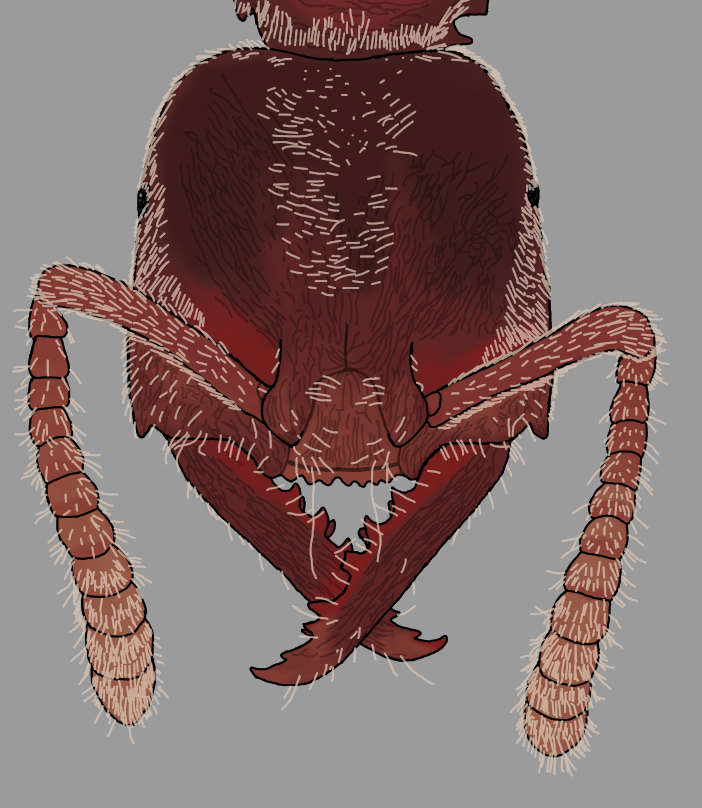
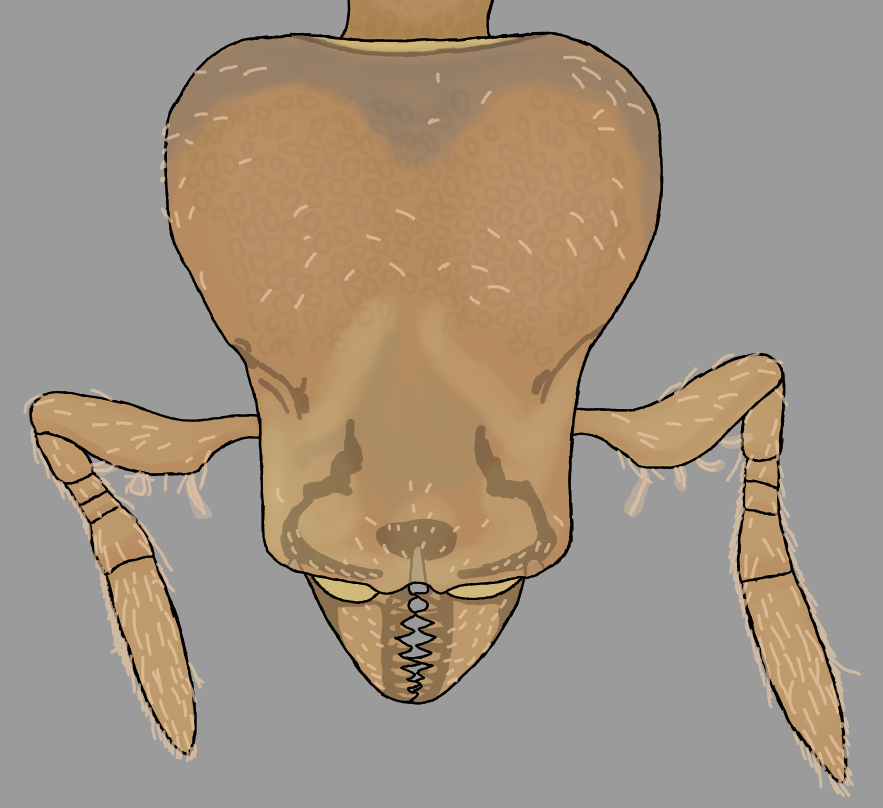
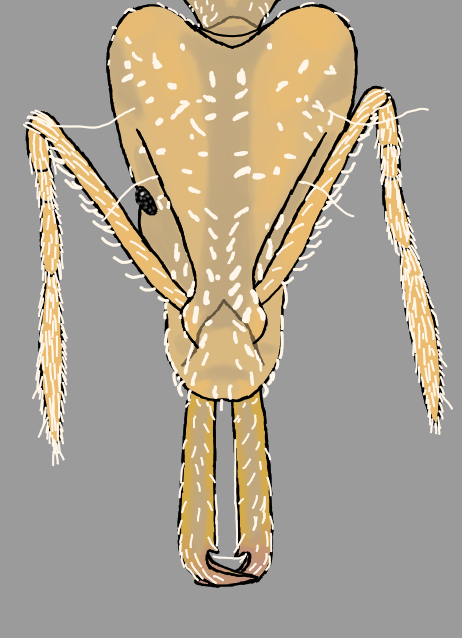
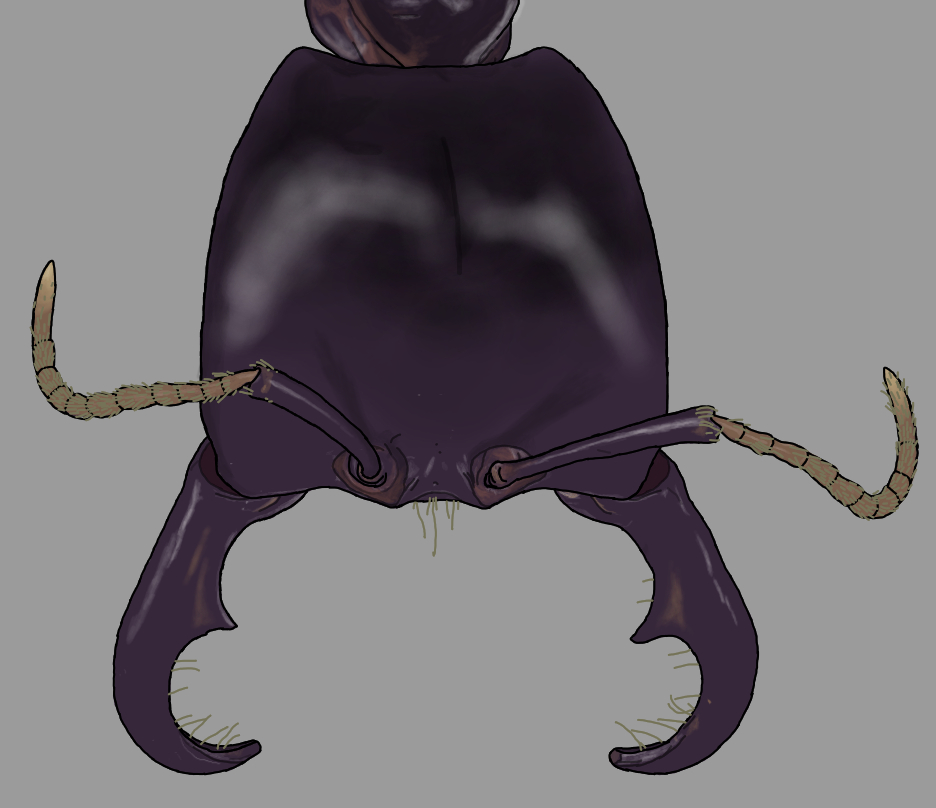
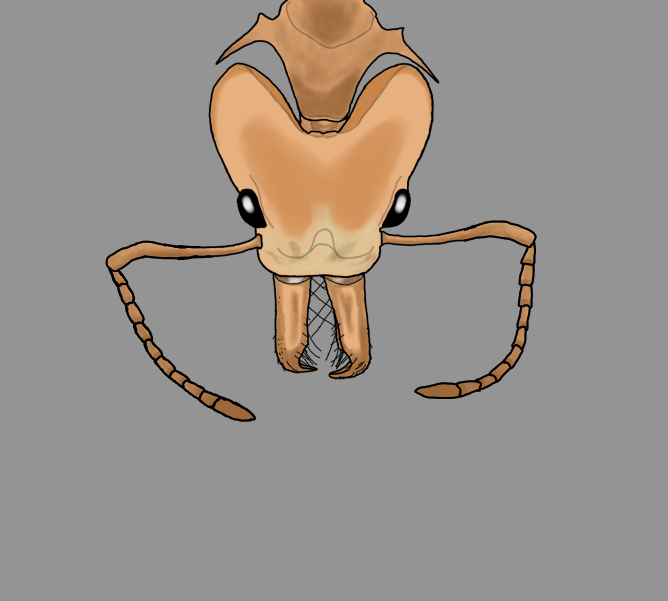
This is my artwork. If you need me, I'll be sitting at my desk waiting for commissions to take...
- FeedTheAnts, Mettcollsuss, TennesseeAnts and 5 others like this
Currently Keeping:
Camponotus chromaiodes, Camponotus nearcticus, Stigmatomma pallipes, Strumigenys brevisetosa, Strumigenys clypeata, Strumigenys louisianae, Strumigenys membranifera, Strumigenys reflexa, Strumigenys rostrata
#26
 Offline
-
Posted October 2 2019 - 9:55 AM
Offline
-
Posted October 2 2019 - 9:55 AM
- Ferox_Formicae and Guy_Fieri like this
My Main Journal | My Neivamyrmex Journal | My Ant Adoption | My YouTube
Join the TennesseeAnts Discord Server! https://discord.gg/JbKwPgs
#27
 Offline
-
Posted October 2 2019 - 2:21 PM
Offline
-
Posted October 2 2019 - 2:21 PM
Cephalotes northernus
Cephalotes northernus is the only species that lives in areas with snow. It tends to live in pine forest all across the northern hemisphere. It tends to be very locally abundant. No captive colonies have ever been maintained, but, scientists have observed them to tend and eat pine aphids. This is the reason why a captive colony has never been maintained, as it is hard to grow a pine tree in a sealed enclosure. Therefore, myrmecocologists plan to monitor colonies 24/7, with high tech cameras. These cameras plot their movements onto a 3 axis graph, so that we can see their movement patterns. Because they seem to exist almost everywhere in the Northern hemisphere, it is suspected that it is actually multiple species, therefore, more taxanomic work needs to be done. Unlike many species of its genus, it is a light brown, to match with the wood of pine trees, and they are only 1mm in length. Queens, are slightly larger, at about 1.5mm. No one has ever witnessed a nuptial flight, so that is another reason why the high tech camera will be implemented. All in all, this species, in order for more to be learned, must be kept in captivity. A certain hobbyist suspects that they get water from pine sap, so when he finds a queen, he will experiment. His location amd name are not known.
Cephalotes northernus is the only species that lives in areas with snow. It tends to live in pine forest all across the northern hemisphere. It tends to be very locally abundant. No captive colonies have ever been maintained, but, scientists have observed them to tend and eat pine aphids. This is the reason why a captive colony has never been maintained, as it is hard to grow a pine tree in a sealed enclosure. Therefore, myrmecocologists plan to monitor colonies 24/7, with high tech cameras. These cameras plot their movements onto a 3 axis graph, so that we can see their movement patterns. Because they seem to exist almost everywhere in the Northern hemisphere, it is suspected that it is actually multiple species, therefore, more taxanomic work needs to be done. Unlike many species of its genus, it is a light brown, to match with the wood of pine trees, and they are only 1mm in length. Queens, are slightly larger, at about 1.5mm. No one has ever witnessed a nuptial flight, so that is another reason why the high tech camera will be implemented. All in all, this species, in order for more to be learned, must be kept in captivity. A certain hobbyist suspects that they get water from pine sap, so when he finds a queen, he will experiment. His location amd name are not known.
- TheMicroPlanet likes this
Hi there! I went on a 6 month or so hiatus, in part due, and in part cause of the death of my colonies.
However, I went back to the Sierras, and restarted my collection, which is now as follows:
Aphaenogaster uinta, Camponotus vicinus, Camponotus modoc, Formica cf. aserva, Formica cf. micropthalma, Formica cf. manni, Formica subpolita, Formica cf. subaenescens, Lasius americanus, Manica invidia, Pogonomyrmex salinus, Pogonomyrmex sp. 1, Solenopsis validiuscula, & Solenopsis sp. 3 (new Sierra variant).
#28
 Offline
-
Posted October 2 2019 - 3:07 PM
Offline
-
Posted October 2 2019 - 3:07 PM
I can draw these, def not as good as ferox's though.
- Ferox_Formicae and Guy_Fieri like this
#29
 Offline
-
Posted October 3 2019 - 4:35 AM
Offline
-
Posted October 3 2019 - 4:35 AM
By the way, I wasn't kidding about the commissions thing. I will be taking commissions if anyone wants their ant(s) drawn. I'll try and make them as detailed as I can. PM me if you're interested and want more information such as pricing. I could also make prints.
- TennesseeAnts likes this
Currently Keeping:
Camponotus chromaiodes, Camponotus nearcticus, Stigmatomma pallipes, Strumigenys brevisetosa, Strumigenys clypeata, Strumigenys louisianae, Strumigenys membranifera, Strumigenys reflexa, Strumigenys rostrata
#30
 Offline
-
Posted October 3 2019 - 2:15 PM
Offline
-
Posted October 3 2019 - 2:15 PM
Protalaridris confusium






Stigmatomma proceratum


- TennesseeAnts, Ferox_Formicae and DDD101DDD like this
#31
 Offline
-
Posted October 3 2019 - 2:18 PM
Offline
-
Posted October 3 2019 - 2:18 PM
Ant ant
Literally just an ant.
Just a plain old ant that does exactly what you expect of it. No surprises, nothing special, and no Sudden Queen Death Syndrome. The queen takes care of brood, dies if unmated, isn't touchy, and steadily grows a colony. Call it Formica simplicica.
- Mettcollsuss, TennesseeAnts, Antennal_Scrobe and 3 others like this
"God made..... all the creatures that move along the ground according to their kinds (including ants). And God saw that it was good. Genesis 1:25 NIV version
Keeping:
Tetramorium immigrans Camponotus vicinus, modoc, novaeboracensis, herculeanus
Formica pallidefulva, argentea Solenopsis molesta
Formica cf. aserva Lasius brevicornis, neoniger
#32
 Offline
-
Posted October 3 2019 - 2:19 PM
Offline
-
Posted October 3 2019 - 2:19 PM
I'll do some more later
- Mettcollsuss and TennesseeAnts like this
#33
 Offline
-
Posted October 4 2019 - 5:12 PM
Offline
-
Posted October 4 2019 - 5:12 PM


- Ferox_Formicae likes this
#34
 Offline
-
Posted October 4 2019 - 5:33 PM
Offline
-
Posted October 4 2019 - 5:33 PM
Wow, you're good at drawing.
- Mettcollsuss likes this
He travels, he seeks the p a r m e s a n.
#35
 Offline
-
Posted October 4 2019 - 7:15 PM
Offline
-
Posted October 4 2019 - 7:15 PM
not really
#36
 Offline
-
Posted October 6 2019 - 9:18 AM
Offline
-
Posted October 6 2019 - 9:18 AM
Atta borealis is a leaf cutter ant that uses pine and fir needles to grow its fungus on. The last part of its name borealis means north in latin and unlike other leafcutter species it live as far north as Alaska. Because it lives far north it has some special adaptations. One is that its fungus gives off heat as it breaks down the needles and these ants don’t hibernate because they need to keep their fungus alive. To do this they stock pile needles in many storage chambers as possible, never less than 10 chambers are needed to survive winter, which they then use to cultivate the fungus. These are also polygynous and can mate in the nest, when there is not a good time to fly. These ants will fly as soon as the snow is off the ground and it is above 50 degrees fahrenheit. They have an extremely short egg to ant period only 2 weeks. The workers range from 1cm-1.5cm the queens are 2cm and lay 10-20 eggs during their founding period. They have a short founding period because the summer in the north is so short. What helps the short egg to ant period is the heat that the fungus gives off. They usually have 3 or more queens in the nest at founding because this species is highly polygynous. This species does not impact the environment much because they never form large trails except near the nest and forage at huge distances from the nest entrances. And never forage above 15 feet off the ground and also use pinecones. This is also not a very common species because the colonies often die during the winter but the empty nests are often taken over next season because they are easier to found the colonies in than digging their own chambers.
Camponotus Incursus a social parasite species that parasitizes the species Atta Borealis. The queen of this species is about 2.5 cm long and minor workers are 1-1.5cm and majors are 2-2.5 cm. This species parasitizes on Atta Borealis specifically because they have fungus which the queen need during the founding and, the aphids they farm need it. Although this species is bulky it has semi-claustral queens. so the queen takes over colonies of these ants and kills the queen. The egg to ant takes about 2 months and it takes about 2 years for they colony to begin releasing alates. They are strictly monogamous during founding but as the colony gets older it acquires more queens from nuptial flights that don’t want to found their colonies on their own these also farm a specific type of aphid that needs the fungus atta borealis farms, so they are always raiding that species for workers and pupae that will grow the fungus. When nuptial flights happen they capture some queens which will take care of the fungus over the winter. When they hibernate the fungus will have the have the queens and their workers to take care of it. When they come out of hibernation they kill the atta queens, and reclaim the colony.
this will help keep Atta Borealis in check


Cephalotes northernus
Cephalotes northernus is the only species that lives in areas with snow. It tends to live in pine forest all across the northern hemisphere. It tends to be very locally abundant. No captive colonies have ever been maintained, but, scientists have observed them to tend and eat pine aphids. This is the reason why a captive colony has never been maintained, as it is hard to grow a pine tree in a sealed enclosure. Therefore, myrmecocologists plan to monitor colonies 24/7, with high tech cameras. These cameras plot their movements onto a 3 axis graph, so that we can see their movement patterns. Because they seem to exist almost everywhere in the Northern hemisphere, it is suspected that it is actually multiple species, therefore, more taxanomic work needs to be done. Unlike many species of its genus, it is a light brown, to match with the wood of pine trees, and they are only 1mm in length. Queens, are slightly larger, at about 1.5mm. No one has ever witnessed a nuptial flight, so that is another reason why the high tech camera will be implemented. All in all, this species, in order for more to be learned, must be kept in captivity. A certain hobbyist suspects that they get water from pine sap, so when he finds a queen, he will experiment. His location amd name are not known.
I'll need good descriptions for these if you want drawings, maybe even a sketch if possible. Ferox, its preferable if you draw your own, as it will stop loss of detail, but I can do it too. I will need a real ant species to base each one of these off of.
- Ferox_Formicae likes this
#37
 Offline
-
Posted October 6 2019 - 9:19 AM
Offline
-
Posted October 6 2019 - 9:19 AM
Daceton megacephala
Daceton megacephala is a worker-less, social parasite of Daceton armigerum. Females are small (5.4-6.8 mm) and have a grossly enlarged head with strongly hooked mandibles. This species lacks a snap-jaw mechanism. No apical teeth are present. The eye is large, similar in size proportionally to the eye of the other two species. the mesosoma is thin and slender, lacking all spines found in other Daceton but the propodeal spines. Propodeal spines are strongly elongated, curving upward at the tip, trailing off into a sharp point. The petioles are short and stout, having large spines off the trailing edges, larger on the petiole. The gaster is wide and smooth, having a small number of long, semi-erect hairs. The coloration is a light peach throughout. Males are similar to that of other Daceton species but can be easily distinguished by their smaller size and darker wings. Females are known for hitching rides on the underside of Daceton armigerum workers. They first seek out a host while in flight. When a host worker is discovered, females hover in place above their host. Females then stoop downwards and neutralize the ant with it's large, curved mandibles, which are adapted to fit perfectly around the 'neck' of all Daceton armigerum worker castes. While the worker struggles to remove the attacker from herself, the Daceton megacephala female maneuvers herself to be situated underneath the worker ant's mesosoma. She then loosens her grip and clings on. After the host ant calms, she returns to the nest where the Daceton megacephala female drops off of her host while simultaneously dropping her wings. Her clinging to her host has covered her in her host's pheromone scent. The Daceton megacephala female sits motionless while workers sense her, covering her in even more pheromones. Once accepted into the colony, she makes her way to the queen. She climbs atop of the queen, covering herself it the queen's pheromones. She acts cooperatively with the queen, though only producing eggs during alate producing season, when new males and queens are produced by both queens.
This thread was on the AntsCanada forum, and thought perhaps I could start it up here.
I will begin-
Lasius arachnedis
Lasius arachnedis is a species of ant in the subfamily Formicinae. It inhabits open grasslands and fields throughout temperate North America and Europe. This species is noted for it's unique hunting strategies, which remotely (but not completely) resemble that of the spider, hence the name. Workers of this species do not forage during the day, yet a large percentage of the colony swarms to the surface around dusk, and begins to release large amounts of pheromones normally used by mosquitoes in their mating cycle. These pheromones attract many mosquitoes, which are then seized and brought back to the nest for consumption. Colonies of this species also farm a specific species of root aphids, Pemphigus lasioadus, from which they acquire all carbohydrate needs. Prior to nuptial flights, the aphids will attach themselves to queen alates, and will provide food for the new colonies as well. Nuptial flights occur between mid July and early September, with each flight consisting of millions of participating alates. Unlike it's closest relatives, L. neoniger, L. niger, L. americanus, L. alienus, etc., this species is highly polygynous, and dozens of queens often band together to form massive colonies. Colonies may reach several hundred thousand workers, yet do to their self sustainability, they do little to no harm to the environment. Nests can be as large as three square meters at the surface, and as deep as ten meters.
Ok then...
Neivamyrmex pilagens
This species of army ant is unique in that it is a slave maker. Unlike other army ants, which raid ant nests of their brood for food, neivamyrmex pilagens allows the host pupae to eclose and uses the workers as its slaves, who follow the raiders during the nomadic phase, grinding up food and feeding it back to them as well as caring for the brood, and completely take over foraging during the statary phase. They will enslave any species they come across, though are especially fond of myrmecocystus, whose repletes they will carry with them wherever they go. New colonies are founded much like other army ants, with a queen and some workers and slaves splitting from the main colony, although they will often attack another ant colony immediately for an extra slave boost.
Strumigenys conversus
This small Myrmecine is a medium sized Strumigenys from the tropics of Ecuador. It's jaws are long, upturned, and end in a point with a single apical tooth. The head is highly elongated and the legs and very long, especially the first pair. On the clypeus protrude 8 long hairs with expanded tips, similar to those found on Strumigenys ornata but longer with wider tips. The hairs just forward past the mandibles. The eyes are fairly large for Strumigenys aiding in sight during daylight hours. The membranous structure on the petiole and post-petiole is greatly expanded. The gaster is smooth with short, bristle-like hairs standing semi-erect. The hairs on the ant's clypeus secrete a chemical which mimics that of the female Linepithema iniquum. Males are attracted to the strong scent produced from glands just below the clypeal hairs. Strumigenys conversus workers gather in large groups and face their heads upwards with their jaws open to a 60o angle. When males tough the clypeal hairs, the mandible slam shut and stun the male before it is paralyzed with a sting. Males are kept alive. Once males are taken back to the nest, workers feed them, fattening them up while they're still paralyzed, occasionally scraping them with their mandible and drinking their hemolymph. Males are kept alive for several months until they die of old age. They are then fed to the colony's larva.
Camponotus diversus
Camponotus diversus is a species of ant in the subfamily Formicinae. It inhabits forests and suburban environments across North America. This species is noted since it is the only documented species in which majors are actually a separate caste. Minor workers, who are usually four to fifteen mm long, care for the brood and queen (or queens, this species is also polygynous). They have fair eyesight, and forage mainly for carbohydrate food sources. They can be aggressive when attacked, yet usually prefer to let the majors handle fighting. Minors are also noted for their quick, erratic movement, similar to that of Anoplolepis gracilipes. Majors, on the other hand, are closer to Polyergus workers than Camponotus. Ranging from nine to forty-two mm in length, majors have massive heads, and oversized powerful mandibles. They actually have several surplus muscles which the minors do not possess, making them even more formidable foes. However, majors cannot take care of brood, and cannot feed or groom themselves. It is the minors' responsibility to make sure the majors are fed and groomed. Another distinguishing characteristic of majors is the fact that they have no social stomach. Yet they can spray formic acid, while minors cannot. The eyesight of majors is several times better than that of minors, exceeding that even of Myrmecia. This enables the majors to hunt down food and kill it. Once food is killed, the majors will drag it back to the nest, and will commence breaking it down, allowing minors to get inside and consume the insect's bodily fluids. The queen(s) always have at least one large major close by, and many smaller majors, and is tended to by dozens or hundreds of minors. Queens of this species are as well built and strong as the large majors, and can be thirty-four to thirty-six mm in length. Nuptial flights occur in mid to late April. Mature colonies, which can be hundreds of thousands of workers strong, only release five to ten queen alates, and thousands of male alates. This is due to the queens' solid, fortified build and exceptional maneuverability, which allows them to mate undisturbed, making the survival rate of queen alates close to seventy-five percent. This species also has the unique ability to sense which colonies are growing too large and could possibly pose a threat to their colony. This rarely includes native species, and usually includes invasive species such as from the genera Tetramorium, Solenopsis, Brachyponera, Linepithima, etc. Once a 'threat' has been determined, the colony will send out minor scouts who will swiftly rush in and attempt to take out foraging workers. Once the target is seized, the worker will rip it into several pieces on the spot. Next, majors and minors will begin holding up the colony's food processions and stealing food sources, which will stunt the threat's growth rate. This will continue for several weeks, and then the colony will gather thousands of minors and majors and raid the colony. These initial raids only penetrate a few inches into the nest. They are designed to steal brood and kill off some of the worker force. With each raid, the workers will plunge deeper and deeper, stealing more brood. The threat colony will be reduced to mere hundreds, and will only have a handful of brood left over. If the queen somehow manages to survive, they will be left alone and no longer be considered a threat. Of course if she is killed, the colony will also die.
#38
 Offline
-
Posted October 6 2019 - 9:21 AM
Offline
-
Posted October 6 2019 - 9:21 AM
Tapinoma bibliconicus
Tapinoma bibliconicus is not uncommom, but rarely found. This is because it has the odd habit of nesting in old books. It gets its name because it was first decribed by a Christian bishop, who found them in an old copy of the Bible. It is their uncanny ability to nest in small spaces which fascinates many. Their ability to do so is not body structure, but mandible strength and hardness. They are hard enough to chew through plastic. They are only found in the British Isles, mostly in the Highlands of Scotland. They are a pale brown in color, and excreet a liquid which smells terrible to most humans. This species israther small, at about 1.5mm in length. In order for the queens to fit in small spaces, they too must be small. They are only 2mm. They are also semiclaustral. They do best in a wood or paper nest. Their colonies do not get very large, as they are strictly monogynous. They are very easy to identify because their color is distinctive, and so are their nesting habit.
#39
 Offline
-
Posted October 6 2019 - 6:39 PM
Offline
-
Posted October 6 2019 - 6:39 PM
Meranoplus Pellis
Hailing from the frozen wasteland of Antarctica, this ant looks like Meranoplus but is completely black and has transparent thick hair that looks white, like a polar bear. These ants move very slowly to conserve what little energy they get, and their brood takes over a year to develop from egg to adult ant. The workers usually spend their time hibernating in their nest and conserving energy. Alates of this species, instead of sitting around and doing nothing, behave a lot like workers while they wait for nuptial flights. The queens have specialized mandibles made to dig into ice if need be. Even the males have worker-like heads and do work in the nest, although they still cannot feed themselves. Flights are very rare and alates tend to stay near to the ground to stay camouflaged as they do not have the advantage of numbers. These ants rarely go out to forage for food, and eat small insects that live in Antarctica or eat small plants or grasses to gain sugar energy. When they find something big like a carcass, they immediately gorge themselves on the meat and attempt to rally the other workers to collect meat as well. For this duration, they move faster than normal(about Meranoplus Bicolor speed) as a feast like this is a once in a lifetime chance. The meat is either given to brood or stored deep in their nests in ice, where it is preserved to be slowly fed to the brood.
Hailing from the frozen wasteland of Antarctica, this ant looks like Meranoplus but is completely black and has transparent thick hair that looks white, like a polar bear. These ants move very slowly to conserve what little energy they get, and their brood takes over a year to develop from egg to adult ant. The workers usually spend their time hibernating in their nest and conserving energy. Alates of this species, instead of sitting around and doing nothing, behave a lot like workers while they wait for nuptial flights. The queens have specialized mandibles made to dig into ice if need be. Even the males have worker-like heads and do work in the nest, although they still cannot feed themselves. Flights are very rare and alates tend to stay near to the ground to stay camouflaged as they do not have the advantage of numbers. These ants rarely go out to forage for food, and eat small insects that live in Antarctica or eat small plants or grasses to gain sugar energy. When they find something big like a carcass, they immediately gorge themselves on the meat and attempt to rally the other workers to collect meat as well. For this duration, they move faster than normal(about Meranoplus Bicolor speed) as a feast like this is a once in a lifetime chance. The meat is either given to brood or stored deep in their nests in ice, where it is preserved to be slowly fed to the brood.
- AntPhycho likes this
#40
 Offline
-
Posted October 6 2019 - 7:01 PM
Offline
-
Posted October 6 2019 - 7:01 PM
Meranoplus Pellis
Hailing from the frozen wasteland of Antarctica, this ant looks like Meranoplus but is completely black and has transparent thick hair that looks white, like a polar bear. These ants move very slowly to conserve what little energy they get, and their brood takes over a year to develop from egg to adult ant. The workers usually spend their time hibernating in their nest and conserving energy. Alates of this species, instead of sitting around and doing nothing, behave a lot like workers while they wait for nuptial flights. The queens have specialized mandibles made to dig into ice if need be. Even the males have worker-like heads and do work in the nest, although they still cannot feed themselves. Flights are very rare and alates tend to stay near to the ground to stay camouflaged as they do not have the advantage of numbers. These ants rarely go out to forage for food, and eat small insects that live in Antarctica or eat small plants or grasses to gain sugar energy. When they find something big like a carcass, they immediately gorge themselves on the meat and attempt to rally the other workers to collect meat as well. For this duration, they move faster than normal(about Meranoplus Bicolor speed) as a feast like this is a once in a lifetime chance. The meat is either given to brood or stored deep in their nests in ice, where it is preserved to be slowly fed to the brood.
interesting, i'll need a good description and a base species from you too.
0 user(s) are reading this topic
0 members, 0 guests, 0 anonymous users








